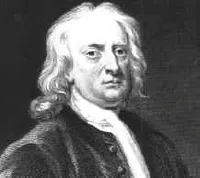
eBook - ePub
Undergraduate Convexity
From Fourier and Motzkin to Kuhn and Tucker
Niels Lauritzen
This is a test
Partager le livre
- 300 pages
- English
- ePUB (adapté aux mobiles)
- Disponible sur iOS et Android
eBook - ePub
Undergraduate Convexity
From Fourier and Motzkin to Kuhn and Tucker
Niels Lauritzen
Détails du livre
Aperçu du livre
Table des matières
Citations
À propos de ce livre
Based on undergraduate teaching to students in computer science, economics and mathematics at Aarhus University, this is an elementary introduction to convex sets and convex functions with emphasis on concrete computations and examples.
Starting from linear inequalities and Fourier–Motzkin elimination, the theory is developed by introducing polyhedra, the double description method and the simplex algorithm, closed convex subsets, convex functions of one and several variables ending with a chapter on convex optimization with the Karush–Kuhn–Tucker conditions, duality and an interior point algorithm.
Contents:
- Fourier–Motzkin Elimination
- Affine Subspaces
- Convex Subsets
- Polyhedra
- Computations with Polyhedra
- Closed Convex Subsets and Separating Hyperplanes
- Convex Functions
- Differentiable Functions of Several Variables
- Convex Functions of Several Variables
- Convex Optimization
- Appendices:
- Analysis
- Linear (In)dependence and the Rank of a Matrix
Readership: Undergraduates focusing on convexity and optimization.
Foire aux questions
Comment puis-je résilier mon abonnement ?
Il vous suffit de vous rendre dans la section compte dans paramètres et de cliquer sur « Résilier l’abonnement ». C’est aussi simple que cela ! Une fois que vous aurez résilié votre abonnement, il restera actif pour le reste de la période pour laquelle vous avez payé. Découvrez-en plus ici.
Puis-je / comment puis-je télécharger des livres ?
Pour le moment, tous nos livres en format ePub adaptés aux mobiles peuvent être téléchargés via l’application. La plupart de nos PDF sont également disponibles en téléchargement et les autres seront téléchargeables très prochainement. Découvrez-en plus ici.
Quelle est la différence entre les formules tarifaires ?
Les deux abonnements vous donnent un accès complet à la bibliothèque et à toutes les fonctionnalités de Perlego. Les seules différences sont les tarifs ainsi que la période d’abonnement : avec l’abonnement annuel, vous économiserez environ 30 % par rapport à 12 mois d’abonnement mensuel.
Qu’est-ce que Perlego ?
Nous sommes un service d’abonnement à des ouvrages universitaires en ligne, où vous pouvez accéder à toute une bibliothèque pour un prix inférieur à celui d’un seul livre par mois. Avec plus d’un million de livres sur plus de 1 000 sujets, nous avons ce qu’il vous faut ! Découvrez-en plus ici.
Prenez-vous en charge la synthèse vocale ?
Recherchez le symbole Écouter sur votre prochain livre pour voir si vous pouvez l’écouter. L’outil Écouter lit le texte à haute voix pour vous, en surlignant le passage qui est en cours de lecture. Vous pouvez le mettre sur pause, l’accélérer ou le ralentir. Découvrez-en plus ici.
Est-ce que Undergraduate Convexity est un PDF/ePUB en ligne ?
Oui, vous pouvez accéder à Undergraduate Convexity par Niels Lauritzen en format PDF et/ou ePUB ainsi qu’à d’autres livres populaires dans Mathematics et Applied Mathematics. Nous disposons de plus d’un million d’ouvrages à découvrir dans notre catalogue.
Informations
Sujet
MathematicsSous-sujet
Applied MathematicsChapter 1
Fourier-Motzkin elimination
You probably agree that it is easy to solve the equation

This is an example of a linear equation in one variable having the unique solution x = 2. Perhaps you will be surprised to learn, that there is essentially no difference between solving a simple equation like (1.1) and the more complicated system

of linear equations in x, y and z. Using the first equation 2x + y + z = 7 we solve for x and get

This may be substituted into the remaining two equations in (1.2) and we get the simpler system

of linear equations in y and z. Again using the first equation in this system we get

ending up with the simple equation 8z = 24. This is an equation of the type in (1.1) giving z = 3. Now z = 3 gives y = 2 using (1.4). Finally y = 2 and z = 3 gives x = 1 using (1.3).

Figure 1.1: Isaac Newton (1642–1727). English mathematician.
Solving a seemingly complicated system of linear equations like (1.2) is really no more difficult than solving the simple equation (1.1). One of the world's greatest scientists, Isaac Newton, found it worthwhile to record this method in 1720 with the words
And you are to know, that by each Æquation one unknown Quantity may be taken away, and consequently, when there are as many Æquations and unknown Quantities, all at length may be reduc'd into one, in which there shall be only one Quantity unknown.

Figure 1.2: Carl Friedrich Gauss (1777–1855). German mathematician.
During the computation of the orbit of the asteroid Pallas around 1810, Gauss encountered the need for solving linear equations related to his famous least squares method. If you spend a little time deciphering the Latin in Gauss's original writings (see Figure 1.3), you will see how elimination appears naturally towards the end of the page. In spite of Newton's explicit ...